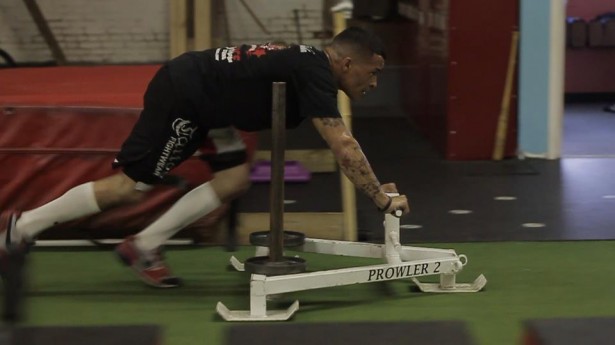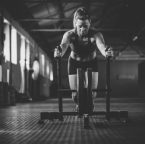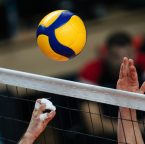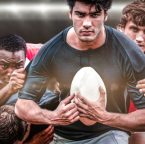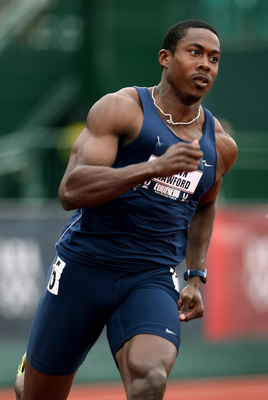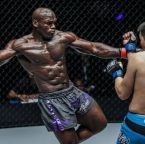If you want to be good at MMA, lifting weights isn’t enough. Running isn’t enough. Just hitting pads or drilling takedowns isn’t enough either.
You need all of it. Power. Endurance. Speed. Mental grit. And yeah, sometimes just pure brute strength. The kind that lets you ragdoll someone off the cage or explode off your back when your lungs are on fire.
This list isn’t some gimmick. These are the exercises real fighters use. Not because they’re trendy, but because they work. They’ve been tested in gyms, cages, and blood-soaked mats all over the world.
Will they turn you into a champion overnight? Nah. But they’ll make you harder to kill. And that’s a damn good start.
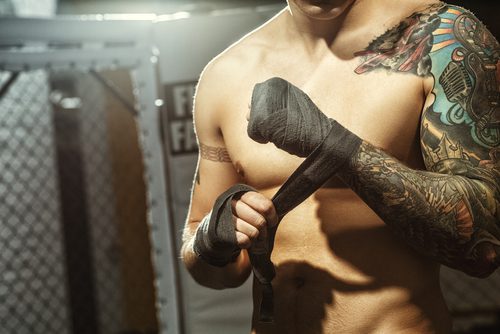
Best Exercises For MMA Athletes
These are the best strength training and cardio exercises to have you ready to kick butt!
Plyo Push-Ups
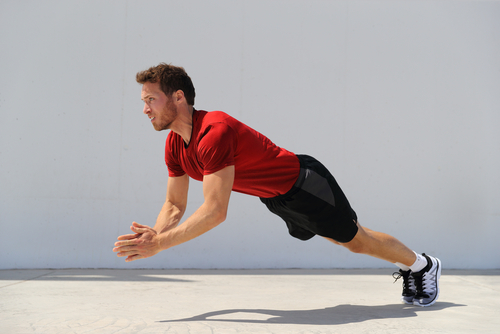
So, picture this: You’re in the middle of an intense MMA fight, and your opponent goes in for a takedown. You need to react quickly and explosively to defend yourself and gain the upper hand. This is where plyo push-ups come in!
Plyo push-ups are a supercharged version of the traditional push-up, combining explosive movements with upper body strength training. By pushing off the ground with explosive force, you can develop the power and speed needed to defend yourself against an opponent and react quickly in grappling situations.
But it’s not just about power and speed. Plyo push-ups also help to improve your reaction time and hand-eye coordination. By reacting quickly to the ground and springing back up with explosive force, you’re training your body to be more agile and nimble – essential qualities for mixed martial artists.
How to Perform Plyo Push-Ups
- Start by getting into a push-up position with your hands slightly wider than shoulder width.
- Lower your body towards the ground, then explosively drive off the ground using your arms, clapping in midair before quickly returning to the starting position.
- Repeat for the desired number of repetitions
Banded Kettlebell Swings
Banded kettlebell swings aren’t just a clever twist on a classic. They’re a power move. You’re basically strapping a jetpack to your kettlebell and telling your hips, “Good luck.”
This combo lights up your glutes, hamstrings, and lower back like a bonfire. You get all the posterior chain gains of a normal swing, but the band adds resistance that fights you at the top. That means more speed, more pop, and more raw explosiveness with every rep.
It also hammers your grip and taxes your lungs, which is exactly what you want if your goal is to stay dangerous deep into round three. Once you’ve felt these, a regular kettlebell swing feels like child’s play.
How to Perform:
- Start by attaching a resistance band to a kettlebell and standing with your feet shoulder-width apart.
- Hinge at the hips and take hold of the kettlebell in an overhand grip. Lift the kettlebell off the ground using your hips and legs, then swing it up and out until arm is fully extended.
- Allow the weight of the kettlebell to pull your arms back down, then swing the kettlebell up and out again in an explosive movement.
- Repeat for the desired number of repetitions.
Med Ball Throws
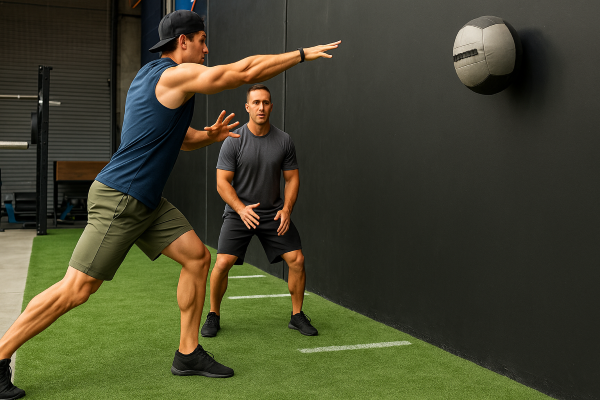
Medicine ball throws are one of the best ways to build explosive power in your upper body and core. Perfect for MMA since strikes and takedowns rely on that kind of snap.
You’ve got options. Overhead slams hit the back and shoulders. Chest passes light up your arms. Rotational throws build that twist power for punches and sprawls.
They also sharpen coordination and balance, which keeps you from getting dumped on your head mid-fight. Start light, throw hard, and build from there.
How to Perform:
There are many variations of med ball throws out there. Here are some of the most common:
Overhead med ball slams: Start by standing with your feet shoulder-width apart and holding a medicine ball above your head. Squat down, then explosively throw the med ball onto the ground, making sure to keep your arms extended and follow through with the movement.
Rotational med ball throws: Begin by standing with your feet shoulder-width apart and holding a medicine ball to one side of the body. Rotate the torso away from the ball, then explosively throw it across the body in a throwing motion. Typically the ball is thrown into a wall then you pick the ball up and repeat throwing the ball to opposite sides.
Deadlifts
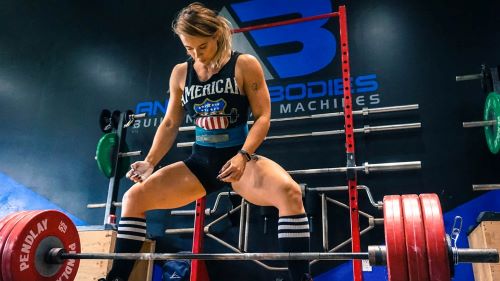
Deadlifts might not be flashy, but they’re one of the best moves an MMA fighter can do. If you ever need to lift someone off the mat, you’ll be glad you trained them.
They hit your legs, glutes, and lower back hard. That’s the kind of strength you need for takedowns, clinch work, and not getting tossed around.
They also help with posture and balance, which makes you more stable and harder to move. Simple lift, big impact.
How to Perform
- Start by standing with your feet shoulder-width apart and a barbell resting on the ground in front of you. Keeping your back straight, bend at the knees and grab the barbell using an overhand grip.
- Before lifting the weight off of the ground, take a deep breath to engage your core. This will help you maintain proper form and prevent injury.
- Drive through your heels to stand up and lift the barbell off of the ground, extending your hips and knees at the top of the movement.
- Lower the barbell back down and repeat for the desired number of repetitions. Always remember to keep good posture throughout each repetition, this is key
Burpees
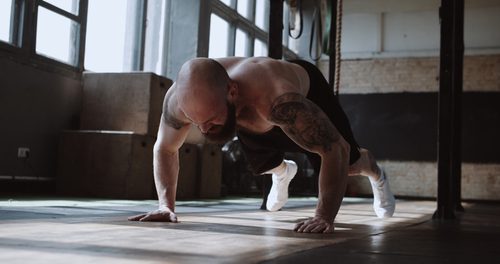
Burpees are brutal. No one really likes doing them, but that’s kind of the point.
They hit just about everything, chest, legs, arms, core, and they spike your heart rate fast. That combo makes them perfect for building real-world conditioning and full-body power.
They’re not just physically hard either. You’ve got to dig deep to keep going when your body says stop. And for fighters, that kind of mental grit pays off.
How to Perform:
- Start by standing with your feet shoulder-width apart and your arms at your sides.
- Drop down into a squat position while bringing your hands to the ground in front of you.
- Next, kick your legs out behind you so that you are in a push-up position and make sure your chest touches the ground.
- Quickly jump your feet back up towards your hands and then jump straight up into the air, reaching your hands overhead.
- Finally, return to the starting position and repeat for desired number of repetitions.
There are many burpee variations out there, but this is the most common one.
Box Jumps
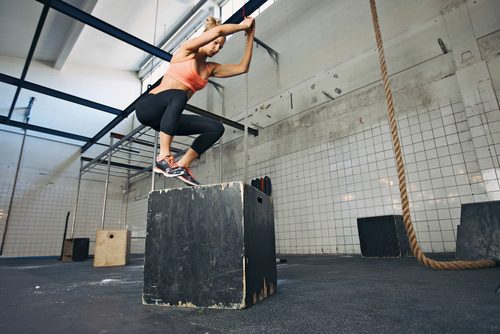
Box jumps are another essential exercise for MMA fighters because they help to improve explosive power, speed, and agility, all of which are crucial for success in the ring.
One of the key benefits of box jumps for MMA fighters is their ability to improve explosive power. Explosive power is the ability to generate a large amount of force quickly, which is essential for executing powerful and explosive movements in the ring. Box jumps help to develop explosive power by challenging your muscles to generate force quickly and explosively.
Box jumps can also help to improve speed and agility, which are critical for MMA fighters who need to be able to move quickly and change direction on a dime. By performing box jumps, and other great plyometric exercises, you’re training your muscles to move quickly and with precision, which can help you react faster and more effectively in the ring.
How to Perform:
- To perform a box jump, start by standing in front of the box with your feet shoulder-width apart
- Bend at the knees and hips and swing your arms back as you lower into a squat position.
- Then, quickly drive up through the legs and swing your arms forward to propel yourself onto the top of the box.
- Once on the box, stand tall with your feet hip-width apart.
- Step off the box and land softly on the ground before repeating for the desired number of repetitions.
Pull-ups/Chin-ups
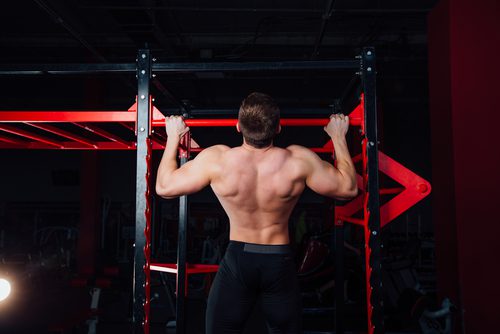
Pull-ups and chin-ups are old-school for a reason. You don’t need much gear, just a bar and a willingness to suffer a little.
They hammer your back, arms, shoulders, and core. Perfect for building the kind of upper body strength that actually shows up in a fight.
And the grip gains? Legit. If you want to hang on to someone who’s squirming like a fish, this is how you train for it.
How to Perform (as if you need to be told)
- To perform a pull-up or chin-up, start by gripping the bar with an overhand grip. Alternatively, an underhand grip can be used for chin-ups.
- Then, engage your core and drive your elbows down towards your sides to pull yourself up until your chin is above the bar.
- Pause at the top for a brief second before slowly lowering yourself back down to the starting position.
- Repeat for desired number of repetitions. Be sure to keep your body tight and controlled throughout the entire movement.
Jumping Rope

Jumping rope is one of the best exercises for MMA fighters who want to improve their conditioning, footwork, and coordination. Not only is it an effective cardiovascular exercise, but it also helps to develop fast-twitch muscle fibers, which are essential for explosive movements in the ring.
Jumping rope is an incredibly engaging exercise because it requires a lot of focus, coordination, and rhythm. When you’re jumping rope, you need to time your jumps just right and maintain a consistent rhythm, which can be challenging but also highly rewarding when you get into the flow.
Just like how jumping rope is an essential exercise for boxers. It only makes sense that jumping rope is also is for MMA fighters, since boxing is a big part of MMA.
How to Perform:
- To perform a jumping rope exercise, start by standing with your feet shoulder-width apart and the rope behind you.
- Grip the handles and swing the rope over your head so that it winds up in front of you.
- Next, jump off both feet at the same time, using an alternating jumping pattern (i.e., left foot first, then right, etc.).
- As you jump, be sure to keep your core tight and focus on maintaining a steady rhythm.
- Continue jumping for the desired number of repetitions or time duration.
Jump Squats

Jump squats are savage. There’s no way around it. You squat down, blast up, land, and do it all over again. And your legs? They start hating you somewhere around rep six.
But they also thank you later.
This move hits your quads, glutes, hammies, calves, all at once. It builds that kind of explosive leg power you need when you shoot for a takedown or launch a knee straight into someone’s chest.
It’s not just brute strength either. The balance, the coordination, the timing—those clean landings matter. They help you move sharper, react faster, and stay light on your feet when it counts.
It burns, but it works.
How to Perform:
- Start by standing with your feet shoulder-width apart
- Lower into a squat position and then explosively drive through your heels to jump up as high as possible
- Upon landing in the squat position, immediately sink back down
- Repeat for desired number of repetitions
Running

If you want to be able to go the distance in an MMA match you are going to need to be in excellent cardiovascular shape. While there are many types of cardio exercises you can do, running is one of the best.
It is a great way to build up your endurance and stamina as well as improve your overall fitness level and body composition. Plus, it doesn’t require any special equipment and can be done virtually anywhere. You can just put on your grey sweatshirt and run around town like you are Rocky Balboa.
Over time, running can help to strengthen the heart and lungs, making it easier for the fighter to deliver oxygen to the muscles during intense training sessions or fights. Improved cardiovascular fitness also means that the fighter is less likely to fatigue quickly, allowing them to maintain their performance for longer periods of time.
Battle Ropes
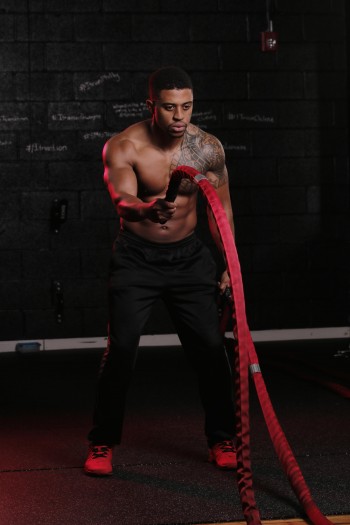
Battle ropes are controlled chaos. They torch your arms, shoulders, and core while jacking up your heart rate in about five seconds flat.
It’s not just about swinging heavy ropes around. Every movement demands power, control, and grit. You’re building serious upper body strength, dialing in your grip, and improving the kind of explosiveness that translates directly into harder strikes and faster scrambles.
They also hit your conditioning like nothing else. You go all-out for 20 seconds, and suddenly your lungs are on fire and your forearms feel like they’re melting. Welcome to fight shape.
The best part? You can get creative with them. Slams, waves, side whips, spirals, whatever. Battle ropes let you mix it up and stay sharp, both mentally and physically.
How to perform:
- Start by standing in an athletic stance with your feet shoulder-width apart and your knees bent.
- Grasp each end of the rope with both hands, making sure to keep your arms slightly bent.
- Alternately slam the ropes into the ground, beginning with one arm and then alternating to the other.
- Continue for desired number of repetitions.
- Once you become comfortable with the basic exercise, you can begin to vary your movements by adding dynamic slams and whips.
Will These Exercises Make Me A Good MMA Fighter?
No. You must have actual fighting skills to be a good MMA Fighter. These exercises will help you condition your body and improve your overall fitness level, which can give you an edge in the ring.
However, no amount of exercise will make up for a lack of technique. You must also practice and perfect the art of fighting if you want to be successful as an MMA Fighter. The combination of physical conditioning and technical mastery is essential to becoming a competent and successful MMA Fighter.
Final Word
If you’re serious about MMA, you already know the grind doesn’t stop at sparring or hitting mitts. It’s what you do outside the cage that separates contenders from cannon fodder. These exercises aren’t just fluff or filler. They hit your lungs, your legs, your grip, and that mental switch that tells you to keep going when everything sucks.
Are they magic? Nope. But they’ll get you stronger, faster, harder to break. Stack them into your training and start building the kind of body that can take punishment and give it back in equal measure.

Wayne Mutata is a Certified USA Weightlifting Coach, Nike SPARQ Combine Trainer, and recognized supplement specialist with over a decade of professional experience. He holds a Master’s degree in Physiology and Anatomy, along with double minors in Dietary Nutrition and Exercise Science from the National Personal Training Institute of Philadelphia.
Wayne is a sought-after Strength and Conditioning expert, working with professional athletes including MMA fighters and elite Figure/Bikini competitors. His training methods are grounded in science and tailored for peak performance. Beyond coaching, Wayne has built a public profile as a fitness model and on-camera fitness personality, appearing on the cover of Fitness101 magazine and earning a nomination in the Men’s Health Ultimate Guy competition.
As the founder of Itrainwithwayne, he delivers custom workout programs, supplement protocols, and online training to clients across the United States and internationally. The Itrainwithwayne brand operates two training studios, the headquarters in Lancaster, PA, and a second location in Philadelphia, PA.

